Fraser

Purchase Heraldry Products
Download Now!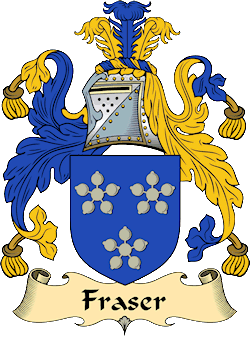

Surname: Fraser
Branch: Fraser
Origins: Scottish
More Info: Scotland
|
|
Background: The exact origins of the surname 'Fraser' can not be determined with any great certainty, although there is little doubt that it came from France.
The first reputed record is that of "Frysel" (vowels were at the time often interchanged), recorded on the Battle Abbey Roll - supposedly a list of William the Conqueror's companions, preserved at Battle Abbey, on the site of his great victory over Harold. However, the authenticity of the manuscript is seriously doubted.
The first definite record of the name in Scotland occurs in the mid-12th century as "de Fresel", "de Friselle", and "de Freseliere", and appears to be a Norman name. Although there is no known placename in France that corresponds with it, the French surname "Frézelière" or "de la Frézelière" or "Frézeau de la Frézelière", apparent in France to this day, corresponds with Scottish version in spelling and traditional area of origin - Anjou. Indeed, apparently while in exile in France Simon Fraser, 11th Lord Lovat "entered into a formal league of amnity" and "declared an alliance" with the French Marquis de la Frézelière and claimed common origin from the "les seigneurs de la Frézelière". The first annual gathering of the Clan Fraser in Canada in 1894 also recalls this connection.
Another tradition claims derivation from a Frenchman called "Pierre Fraser, Seigneur de Troile", who came to Scotland in the reign of Charlemagne to form an alliance with the mythical King Achaius. Pierre's son was then to have become thane of the Isle of Man in 814.
Yet another explanation for the surname is that it is derived from the French words fraise, meaning strawberry (the fruit), and fraisiers, strawberry plants. There is a fabled account of the Fraser coat of arms which asserts during the reign of Charles the Simple of France, a nobleman from Bourbon named Julius de Berry entertained the King with a dish of fine strawberries. De Berry was then later knighted, with the knight taking strawberry flowers as his Arms and changing his name from 'de Berry' to 'Fraiseux' or 'Frezeliere'. His direct descendants were to become the lords of Neidpath Castle, then known as Oliver. This origin has been disputed, and seen as a classic example of canting heraldry, where heraldic symbols are derived from a pun on similar sounding surname: (strawberry flowers - fraises).
|
 Motto: Motto: Dexter, All my hope is in God; sinister, In God is all. Arms: Azure, three fraises Argent. Crest: Dexter, on a mount a flourish of strawberries leaved and fructed Proper; sinister, an ostrich holding in its beak a horseshoe Proper. Supporters: Two angels Proper with wings expanded and vested in long garments Or. Badge: A fraise Argent. Plant: Strawberry. View the Heraldry Dictionary for help.

The Frasers probably come from Anjou in France, and the name may derive
either from Fredarius, from Fresel or from Freseau. It has also been
suggested that they descend from a tribe called Friselii in Roman Gaul,
whose badge was a strawberry plant.
They first appeared in Scotland around 1160, when Simon Fraser held lands
at Keither in East Lothian. About five generations later Sir Simon Fraser
was captured fighting for Robert the Bruce, and executed with great
cruelty by Edward I in 1306. His cousin, Sir Alexander Fraser of Cowie,
Bruce's chamberlain, was the elder brother of another Sir Simon Fraser,
from whom the Frasers of Lovat descend. He married Robert the Bruce's
sister, Mary, who for a time was imprisoned by the English in a cage hung
from Roxburgh Castle wall. Simon's grandson, Sir Alexander Fraser of Cowie
and Durris, acquired the castle now called Cairnbulg and the lands of
Philorth by marriage with Joanna, younger daughter and co-heirness of the
Earl of Ross in 1375. Eight generations later, in 1592, Sir Alexander
Fraser of Philorth received from James VI charters creating the fishing
village of Faithlie, which he had transformed into a fine town, also
improving the harbour, which became a burgh of regality and a free port,
called Fraserburgh. He was also authorised to found a university in the
town, but the scheme was short-lived, falling victim to the religous
troubles of the times. When plague hit Aberdeen in 1647, staff and
students from King's College were evacuated to the town for two years, but
now a street name and some lettering carved on a wall are all that remain
of the early seat of learning.
The eighth Laird of Philorth also built Fraserburgh Castle, later the
Kinnaird Head Lighthouse, and in doing so bankrupted himself, being forced
to sell the Castle of Philorth, which passed out of the family for over
three hundred years until the nineteenth Lord Saltoun bought it back in
1934.
The ninth Laird married the heiress of the Abernethy Lords Saltoun, and
their became the tenth Lord Saltoun. The present chief, as well as bearing
the undiffenced arms of Fraser, has also a 'grand coat' which quarters the
arms of Abernethy, Wishart and Ross. The tenth Lord Saltoun was severely
wounded at the Battle of Worcester in 1651, but survived thanks to his
servant, James Cardno, who rescued him from the battlefield, hiding and
nursing him until he finally got his master home to Fraserburgh. In 1666
he built a house a mile from Fraserburgh which he called Philorth House,
where the family lived until it was burned down in 1915. Sir Alexander
Fraser of Durris was personal physician to Charles II. He was educated at
Aberdeen and soon acquired a reputation for general scholarship but
particularly in medicine. He accompanied the King throughout his campaign
in 1650, but seems to have been unpopular with some of the more extreme
Covenanters because of his progressive scientific opinions. After the
Restoration in 1660, he sat in the Scottish Parliament although he was
still prominent enough in court circles to feature in the diaries of
Samuel Pepys. He died in 1861. The family took no part in the Jacobite
rebellion.
The sixteenth Lord Saltoun commanded the Light Companies of the First Guards in the Orchard at Hougoumont on the morning of the Battle of Waterloo in 1815. It was he who, later in the day, first noticed the Imperial Guard emerge from the Hollow where they had been hiding all day, and drew the Duke of Wellington's attention to them. The nineteenth Lord Saltoun was a prisoner of war in Germany for most of the First World War. He became a member of the House of Lords from 1936 and devoted himself to numereous public works, and latterly to promoting the Royal National Lifeboat Institution (RNLI). He died in 1979 at the age of 93.
Other branches of the family also prospered. Andrew Fraser of Muchalls was raised to the peerage in June 1633 with the title, 'Lord Fraser'. He completed the early work on Castle Fraser which stands south of the River Don near Inverurie. This magnificent castle, entirely reminiscent of a French chateau, is now fully renovated and in the care of the National Trust for Scotland. The peerage conferred on Andrew Fraser fell dormant in the eighteenth century. The nineteenth Lord was succeeded by his daughter, Flora Fraser, twentieth Lady Saltoun. She is married to Captain Alexander Ramsay of Mar, a great-grandson of Queen Victoria, and he and Lady Saltoun are officially members of the royal family.
Name Variations: Fraser, Bisset, Brewster, Cowie, Frew, Frissell, Frizell, Macgruer, Macimmey, MacKim, MacKimmie, MacShimes, MacSimon, MacSymon, MacTavish, Oliver, Sim, Sime, Simon, Simpson, Sims, Simson, Syme, Symon, Twaddle, Tweedie, Frazer, Frasher, Frisell, Frasee, Frazie, Frazier, Friselle, Fresser, Friser, Fryssar, Fressell, Fresal, Fresale, Frichelle, Fraysser, Fresall, Fresle, Fresill, Fressair, Fraisser.
References:One or more of the following publications has been referenced for this article.The General Armory; Sir Bernard Burke - 1842.
A Handbook of Mottoes; C.N. Elvin - 1860.
Scottish Clans and Tartans; Neil Grant - 2000.
Scottish Clan and Family Encyclopedia; George Way of Plean and Romilly Squire - 1994.
Scottish Clans and Tartans; Ian Grimble - 1973.
World Tartans; Iain Zaczek - 2001.
Clans and Families of Scotland; Alexander Fulton - 1991.
Wikipedia: http://en.wikipedia.org/wiki/Clan_Fraser

|
|

The beautiful heraldry artwork for this family is available to purchase on select products from the Celtic Radio Store. We look forward to filling your order!

|
|

|
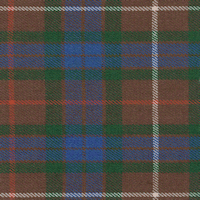
Ancient Hunting | 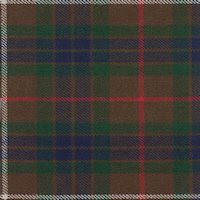
Modern Hunting | 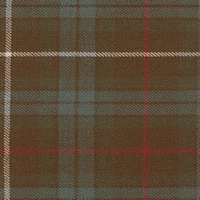
Weathered Hunting | 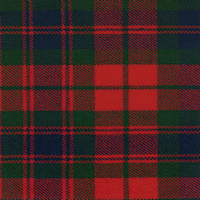
Old Modern | 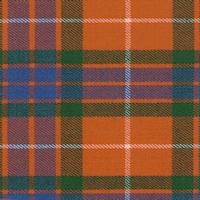
Ancient Red | 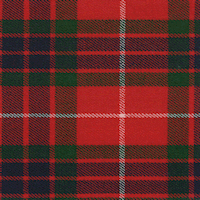
Modern Red | 
Weathered Red |
|
|
|